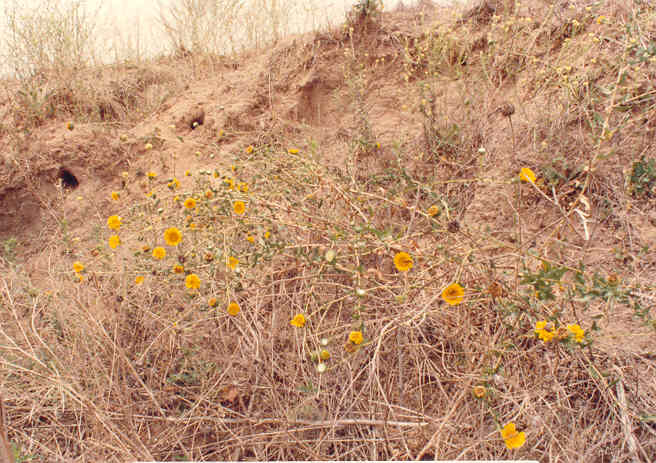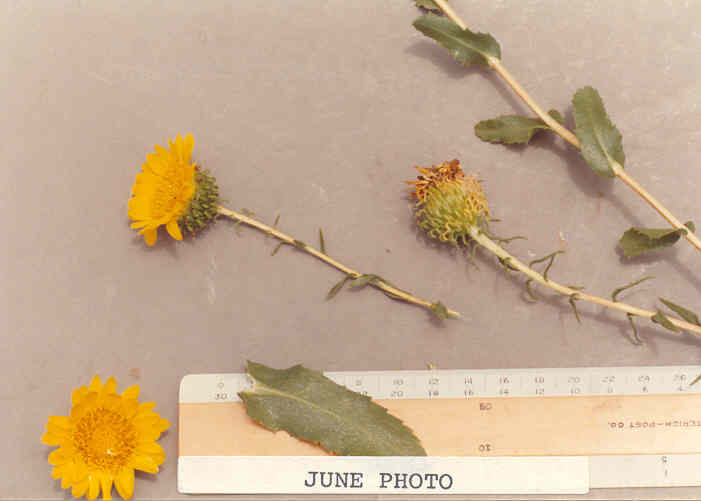
 |
Grindelia camporum var. bracteosum (J.T. Howell) M.A. Lane=Grindelia robusta var. robustaAsteraceae (Sunflower Family)NativeGum Plant |
Plant Characteristics: Perennial,
stems few, from a subligneous crown, stout, corymbosely branched above, 5-12 dm.
long; lvs. sharply toothed to finely serrate or entire, the basal oblanceolate,
to 18 cm. long, the cauline much reduced, lance-ovate to linear-oblong,
clasping; heads 3-5 cm. across, often strongly and translucently resinous, the
long green tips of the phyllaries rolled back in a loop; rays 25-45, yellow,
8-15 mm. long.
Habitat: Dry slopes
and fields, below 4000 ft.; Coastal Sage Scrub, Chaparral; largely cismontane,
n. L. Calif. to Santa Barbara Co. March-Sept.
Name: David
Hieronymous Grindel (1776-1836), was a
highly respected Estonian pharmacologist, physician and botanist.
(Dale 65). Latin, robustus,
robust. (Jaeger 223). Latin, bractea, a
thin metal plate or scale, gold leaf. (Jaeger 39).
John Johnson says that in later usage this meaning came to mean scales in
general and the scale like appendages came to be called bracts.
Bracteosum, having bracts.
Latin, campus, growing in a
field. (Jaeger 44). Camporum, growing
in a field.
General: Occasional in
the study area. My observation is
that there are usually only one or two specimens growing wherever this plant is
found. Photographed on the Santa
Ana Heights Flats. (my comments).
A decoction from the leaves of Grindelia
spp., stems and buds, was taken internally by the Indians for lung
troubles and applied externally for skin diseases. (Heizer and Elsasser 131).
The drug Grindelia is derived from at least three species, G.
camporum, G. squarrosa and G. humilis.
An infused or decocted extract of Grindelia
acts as an expectorant and sedative, with an action resembling atropine.
Its principal use has been of value in whooping cough.
Most references mention the possible use of Grindelia
for relief from ivy poisoning. (Coon
133). The
buds are covered with a whitish gum which protects them from harsh sunlight.
The resinous tops of this and other species of Gum-Plants were used by
the Indians as a wash for poison oak rash.
You can try this but you will probably be better off with something
Text Ref: Dale 64;
Hickman, Ed. 272; Munz, Flora So. Calif.
173; Roberts 11.
Photo Ref: June 4 84 #
10,11.
Identity: by R. De Ruff, confirmed by F. Roberts.
Computer Ref: Plant Data 177.
Have plant specimen.
Last edit 10/21/02.
 |
June Photo